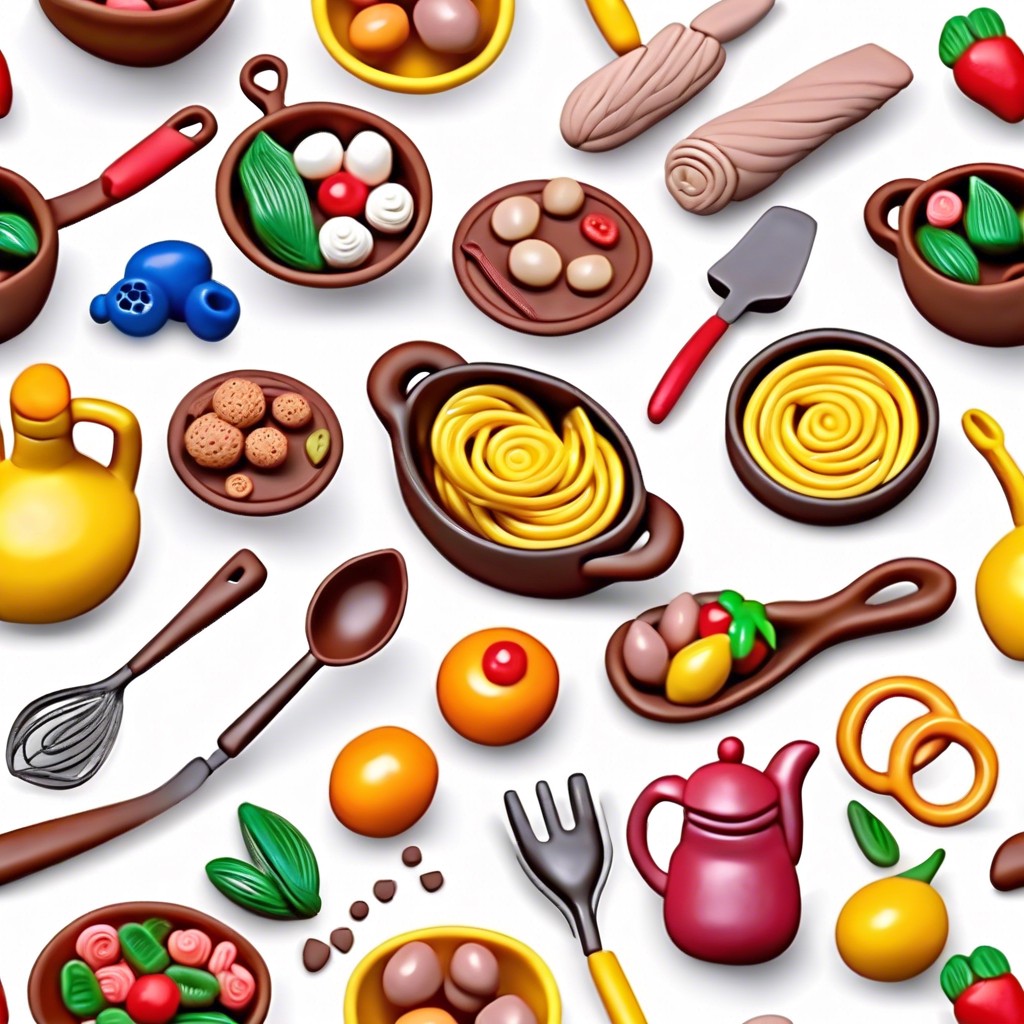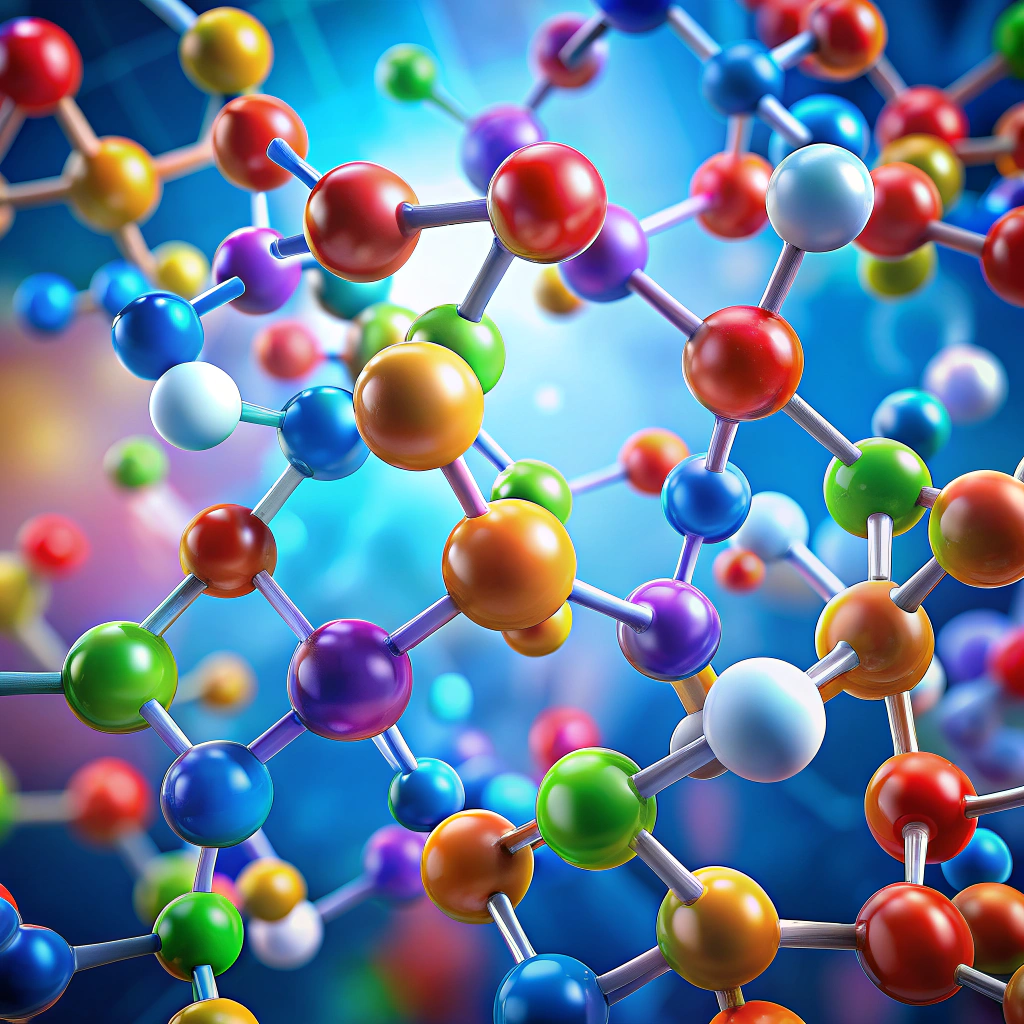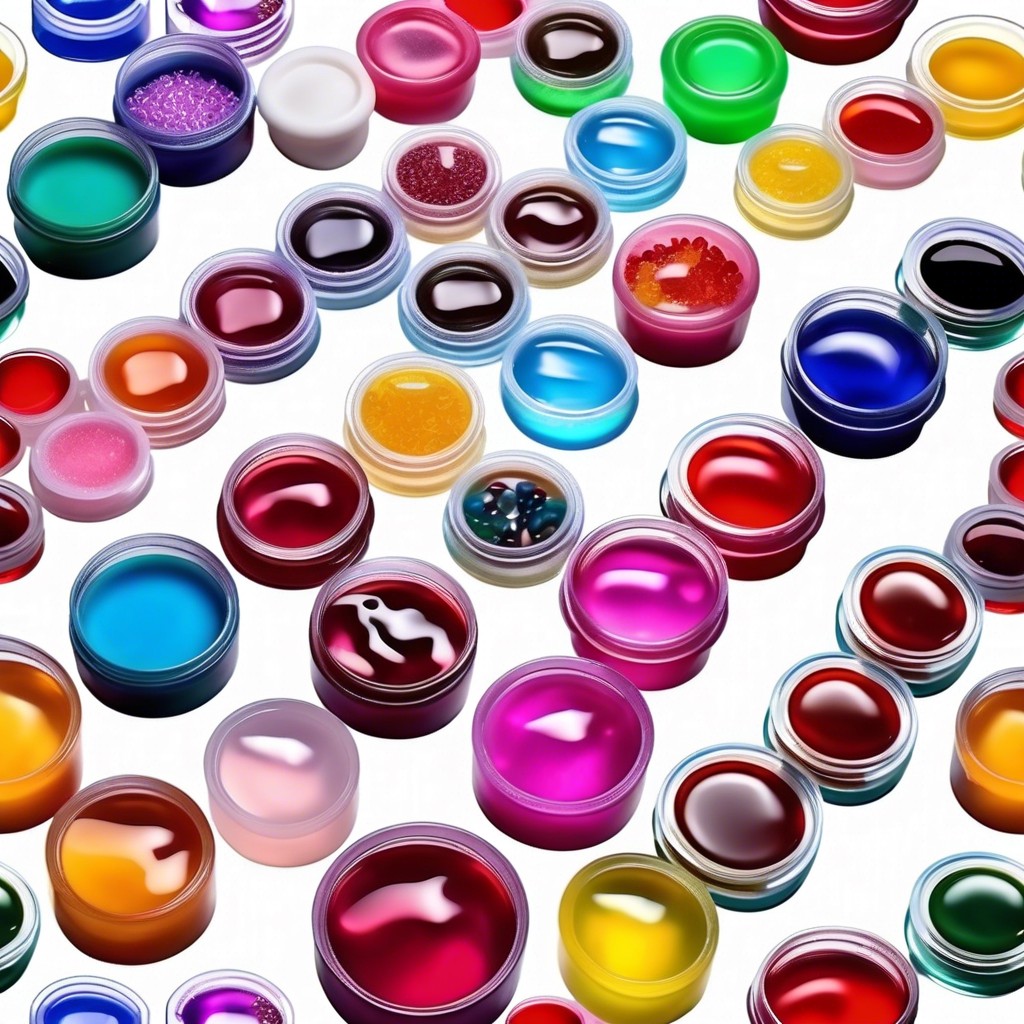Find out if polymer clay is safe for food contact or if your creative culinary dreams need a safety makeover.
Key takeaways:
- Polymer clay is not food-safe for direct contact.
- Use separate tools for crafting and food.
- Avoid plasticizers; they can migrate to food.
- Bake polymer clay at recommended temperatures only.
- Cover projects with food-safe epoxy for protection.
Is Polymer Clay Safe With Food?

Polymer clay is a crafty marvel. However, it’s not designed for direct contact with food. Here’s the scoop:
Think of polymer clay as the rebellious teenager of the crafting world: it wants to do it all but needs some boundaries. It’s made of PVC mixed with a liquid plasticizer. These plasticizers can migrate, which sounds like they’re off on a European tour, but it’s not so fun for your stomach.
It isn’t certified food safe because it may share some undesirable substances with your edibles. These hitchhikers aren’t invited to your mealtime party.
Crazy-colored utensils? They might be a thing, but best to avoid using polymer clay directly on anything you plan to nibble, munch, or chew. You can safely use it for decorative handles that won’t come into contact with your food.
Porcelain presents a nice alternative for direct food engagement. Otherwise, use polymer clay for what it does best: adding style without the side of unexpected adventures.
Covering Cutlery and Glasses With Polymer Clay
Using polymer clay on cutlery and glasses can transform everyday items into miniature masterpieces. But let’s face it, nobody wants an artsy fork that’s toxic. Here’s the scoop:
Polymer clay itself is not food-safe, so it’s best to avoid direct contact with food or mouths. Think of it as the clingy friend who doesn’t understand boundaries.
Creating decorative handles on cutlery or stems on glasses? Go wild, as long as they’re away from the business end. Just remember, the sculptures stay on the outside, permanently friend-zoned from the grub.
Want to add some pizzazz to your set? Use an epoxy resin or glaze that’s labeled as food-safe for a protective, invisible layer. It’s like the secret service detail for your polymer creation.
Lastly, keep specialized tools for polymer projects. Those pretty polka-dot knives need their own sculpting squad to stay dazzling without a side of glue-flavored soup.
Use Clay Dedicated Tools
When working with polymer clay, keeping your tools separate from those used in food preparation is crucial. Mixing them up is like using your toothbrush for cleaning grout—just why? Here’s the lowdown:
– Polymer clay can leave residues that are not snack-friendly, so dedicate tools solely for your crafty endeavors.
– Gather items like knives, rollers, and cutters that will forever say adios to your kitchen. Once they go clay, they never come back!
– For baking your creations, line that baking sheet with foil or parchment to prevent unwanted flavor infusions—unless you’re crafting polymer clay cookies for decoration only.
By keeping these tools in a dedicated space, you’ll prevent any unintentional cross-contamination. Your art supplies and your snacks can both live safe and happy lives, maintaining the peace of your kitchen ecosystem.
What About Plasticizers?
So, there’s plasticizers in polymer clay. Sounds fancy, huh? These are chemicals added to make the clay soft and workable—like magic but nerdier. However, the thought of it making a guest appearance on your plate is a little unappetizing.
First off, they can migrate. Much like your Uncle Bob after a family dinner, they like to wander into places they shouldn’t be, such as food surfaces.
Next, they’re sneaky. Their composition can change with exposure to heat. This mutation doesn’t confer superpowers, just alterations that aren’t food-friendly.
Finally, they aren’t FDA-approved for food contact. So, unless you’re looking to enhance your spaghetti with a side of mystery chemistry, it’s a no-go. Keep the fancy clay for decorative use only!
Baking Polymer Clay Safely
When heating polymer clay, the aim is to bake it without summoning any toxic fumes. Here are some key checkpoints:
Start clean. Ensure no food is in the oven during baking. Polymer clay should not be a surprise ingredient in tonight’s casserole.
Follow instructions. Bake the clay at the recommended temperature—usually around 265°F to 275°F (129°C to 135°C). Schmuck it higher and you’ll go from creative to crispy in seconds.
Ventilate the area. Open a window, turn on a fan, channel your inner weathercaster—air is your ally.
Use a dedicated baking sheet or cover your existing one with parchment paper or a silicone mat to keep things tidy. Your cookies will thank you.
Avoid microwaves. Polymer clay’s secret ingredient is not a microwave-safe label. Stick with conventional ovens or toaster ovens.
If you notice smoke or a smell reminiscent of a plastic campfire, it’s a sign to air out the area immediately. Overbaked clay takes villain status in the kitchen, so keep a keen eye on your creations.
Recap




